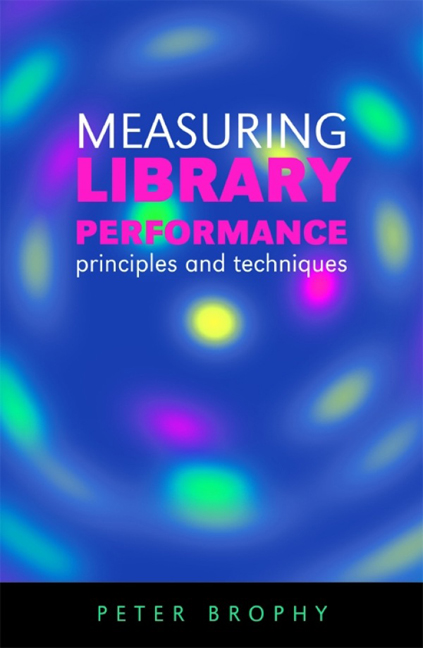Book contents
- Frontmatter
- Contents
- List of figures
- List of tables
- Preface
- Acronyms and abbreviations
- 1 Background
- 2 Theoretical considerations
- 3 User satisfaction
- 4 Impact on users
- 5 Social and economic impact
- 6 Inputs
- 7 Processes
- 8 Outputs
- 9 Staff
- 10 Infrastructure
- 11 Services for all
- 12 Benchmarking
- 13 The balanced scorecard
- 14 Standards
- Appendix 1 Data collection methods
- Appendix 2 The analysis of data
- Appendix 3 The presentation of results
- Index
- Frontmatter
- Contents
- List of figures
- List of tables
- Preface
- Acronyms and abbreviations
- 1 Background
- 2 Theoretical considerations
- 3 User satisfaction
- 4 Impact on users
- 5 Social and economic impact
- 6 Inputs
- 7 Processes
- 8 Outputs
- 9 Staff
- 10 Infrastructure
- 11 Services for all
- 12 Benchmarking
- 13 The balanced scorecard
- 14 Standards
- Appendix 1 Data collection methods
- Appendix 2 The analysis of data
- Appendix 3 The presentation of results
- Index
Summary
the ultimate criterion for assessing the quality of a service is its capability for meeting the user needs it is intended to serve, and … the value of a service must ultimately be judged in terms of the beneficial effects accruing from its use.
(Richard Orr)■ Introduction
Performance measurement is central to library management, since without a firm grasp on what is actually being achieved it is impossible to move forward to improved service – or even to maintain the status quo. Measuring achievements against aims and objectives reveals the relevance of the service and enables managers to judge whether staff effort and resources are being used in the best possible ways. Gathering data on levels of service provides a basis for comparative assessments, either against similar organizations or against guidelines and standards. Analysing the effects the service is having on its users enables evidence of impacts and benefits to be presented, providing the ultimate justification for the service's existence.
Librarians and other information professionals have long been interested in measuring the performance of their services. Important theoretical work was undertaken in the 1940s by S. C. Bradford at the Science Museum in London (Bradford, 1948), influencing the design of the highly innovative National Lending Library for Science and Technology, later to become part of the British Library. In the 1960s Philip Morse published a groundbreaking book on library effectiveness (Morse, 1968), while in the early 1970s the concept of the ‘goodness’ of library services was explored by Richard Orr (Orr, 1973). He suggested that it is important to distinguish between the question ‘How good is this service?’, which is a matter of quality, and ‘How much good does this service do?’, which he characterized as a question of value. In 1977, F. W. Lancaster'sMeasurement and Evaluation of Library Services appeared, marking the entry of the topic into the mainstream of library practice (Lancaster, 1977). During the 1980s among the most influential figures in this field were Nancy Van House and Charles McClure: their work is well summarized in the influentialMeasuring Academic Library Performance, published in 1990 (Van House, Weil and McClure, 1990). In the same year José-Marie Griffiths and Don King prepared a manual on public library performance indicators for the British Library Research and Development Department (Griffiths and King, 1990).
- Type
- Chapter
- Information
- Measuring Library Performanceprinciples and techniques, pp. 1 - 18Publisher: FacetPrint publication year: 2006



